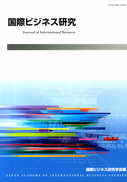Volume 4, Issue 2
Displaying 1-25 of 25 articles from this issue
- |<
- <
- 1
- >
- >|
-
Article type: Cover
2012Volume 4Issue 2 Pages Cover1-
Published: October 10, 2012
Released on J-STAGE: July 02, 2017
Download PDF (27666K) -
Article type: Article
2012Volume 4Issue 2 Pages i-
Published: October 10, 2012
Released on J-STAGE: July 02, 2017
Download PDF (138K) -
Article type: Index
2012Volume 4Issue 2 Pages Toc1-
Published: October 10, 2012
Released on J-STAGE: July 02, 2017
Download PDF (58K) -
Article type: SPECIAL TOPICS ARTICLES
2012Volume 4Issue 2 Pages 1-18
Published: October 10, 2012
Released on J-STAGE: July 02, 2017
Download PDF (1995K) -
Article type: SPECIAL TOPICS ARTICLES
2012Volume 4Issue 2 Pages 19-27
Published: October 10, 2012
Released on J-STAGE: July 02, 2017
Download PDF (3205K) -
Article type: ARTICLES
2012Volume 4Issue 2 Pages 29-45
Published: October 10, 2012
Released on J-STAGE: July 02, 2017
Download PDF (4452K) -
Article type: ARTICLES
2012Volume 4Issue 2 Pages 47-61
Published: October 10, 2012
Released on J-STAGE: July 02, 2017
Download PDF (1603K) -
Article type: ARTICLES
2012Volume 4Issue 2 Pages 63-78
Published: October 10, 2012
Released on J-STAGE: July 02, 2017
Download PDF (1660K) -
Article type: ARTICLES
2012Volume 4Issue 2 Pages 79-91
Published: October 10, 2012
Released on J-STAGE: July 02, 2017
Download PDF (1388K) -
Article type: ARTICLES
2012Volume 4Issue 2 Pages 93-113
Published: October 10, 2012
Released on J-STAGE: July 02, 2017
Download PDF (2183K) -
Article type: ARTICLES
2012Volume 4Issue 2 Pages 115-132
Published: October 10, 2012
Released on J-STAGE: July 02, 2017
Download PDF (1909K) -
The Retention Management of Foreign Non-regular Workers: in Terms of International Maritime IndustryArticle type: ARTICLES
2012Volume 4Issue 2 Pages 133-149
Published: October 10, 2012
Released on J-STAGE: July 02, 2017
Download PDF (1820K) -
Article type: NOTES
2012Volume 4Issue 2 Pages 151-162
Published: October 10, 2012
Released on J-STAGE: July 02, 2017
Download PDF (1197K) -
Article type: NOTES
2012Volume 4Issue 2 Pages 163-174
Published: October 10, 2012
Released on J-STAGE: July 02, 2017
Download PDF (1227K) -
Article type: SERIES
2012Volume 4Issue 2 Pages 175-186
Published: October 10, 2012
Released on J-STAGE: July 02, 2017
Download PDF (1486K) -
Article type: Bibliography
2012Volume 4Issue 2 Pages 187-197
Published: October 10, 2012
Released on J-STAGE: July 02, 2017
Download PDF (524K) -
Article type: Appendix
2012Volume 4Issue 2 Pages 198-200
Published: October 10, 2012
Released on J-STAGE: July 02, 2017
Download PDF (171K) -
Article type: Appendix
2012Volume 4Issue 2 Pages 201-204
Published: October 10, 2012
Released on J-STAGE: July 02, 2017
Download PDF (133K) -
Article type: Appendix
2012Volume 4Issue 2 Pages 205-
Published: October 10, 2012
Released on J-STAGE: July 02, 2017
Download PDF (64K) -
Article type: Appendix
2012Volume 4Issue 2 Pages 205-
Published: October 10, 2012
Released on J-STAGE: July 02, 2017
Download PDF (64K) -
Article type: Appendix
2012Volume 4Issue 2 Pages 206-
Published: October 10, 2012
Released on J-STAGE: July 02, 2017
Download PDF (77K) -
Article type: Appendix
2012Volume 4Issue 2 Pages 206-208
Published: October 10, 2012
Released on J-STAGE: July 02, 2017
Download PDF (179K) -
Article type: Appendix
2012Volume 4Issue 2 Pages 209-
Published: October 10, 2012
Released on J-STAGE: July 02, 2017
Download PDF (41K) -
Article type: Appendix
2012Volume 4Issue 2 Pages App1-
Published: October 10, 2012
Released on J-STAGE: July 02, 2017
Download PDF (22K) -
Article type: Cover
2012Volume 4Issue 2 Pages Cover2-
Published: October 10, 2012
Released on J-STAGE: July 02, 2017
Download PDF (66K)
- |<
- <
- 1
- >
- >|
